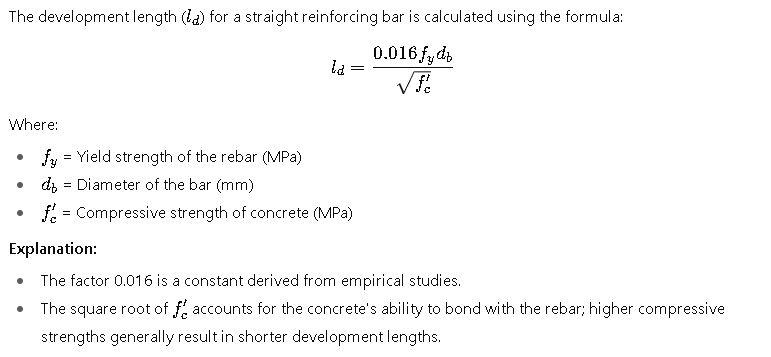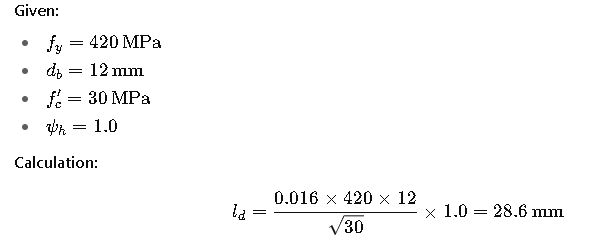Rebar calculation is essential in reinforced concrete design, ensuring structures safely resist all applied loads. This guide explores development length, splice length, detailing, tables, formulas, examples, and expert insights.
Rebar Weight Calculator
How is rebar weight calculated?
Typical steel density?
Formula used
Common Rebar Calculation Values
Understanding the typical values used in rebar calculations is essential for accurate design. Below is a table summarizing the most common values for various parameters:

These values are based on industry standards and may vary depending on specific project requirements and local codes.
Rebar Calculation Formulas and Detailed Explanations
1. Development Length for Straight Bars

2. Development Length for Hooked Bars
For bars with standard hooks, the development length is adjusted by a modification factor ψh:
Explanation:
- The hook provides additional anchorage, reducing the required development length.
- ψh typically equals 1.0 for standard hooks.
3. Splice Length
When two reinforcing bars are spliced, the splice length (lsp) is calculated as:
Explanation:
- The factor 1.3 accounts for the reduced bond strength at the splice interface.
4. Lap Splice Length
For lap splices, the required length is:

Real-World Examples
Example 1: Development Length for a Straight Bar

Interpretation:
- The required development length for the bar is 28.6 mm to ensure full bond strength.
Example 2: Development Length for a Hooked Bar

Interpretation:
- The development length remains the same as for a straight bar, as the hook does not provide additional anchorage in this case.
Additional Considerations
- Bar Coating: Epoxy-coated bars require a higher development length due to reduced bond strength.
- Concrete Strength: Higher compressive strengths lead to shorter development lengths.
- Bar Size: Larger bars require longer development lengths to develop full strength.
References
- ACI 318-19: Building Code Requirements for Structural Concrete
- ACI 318-25: Proposed Changes to ACI 318-19

